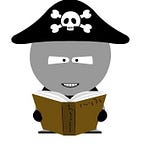Nursery Rhymes
Mother Goose, Poetry, Nonsense, and Parenting
The most awkward moment for an essayist is to recommend some reading for no particular reason. It goes against custom. Making the case for fairy tales, for example, Bruno Bettelheim felt obliged to call his book “The Uses of Enchantment,” as if enchantment alone was not a sufficient reward unless it also served some practical purposes. But here I am, nonetheless, making the case for nursery rhymes for no other reason than they are delightful.
Others have tried to justify the nursery rhymes by saying they teach lessons. When Humpty Dumpty falls from his wall and is irreparably broken, youngsters profitably learn, authorities tell us, that some things cannot be undone; and maybe that’s the case. But what is to be learned when the dozing Little Boy Blue is summoned to blow his horn because of his straying sheep: Is this story really about the dangers of falling asleep on the job? And what lessons in child-raising are to be gathered from “The Old Woman Who Lived in a Shoe” (whose response to hungry kids is to whip them soundly and send them to bed)? Finally, recite the famous lullaby “Rock a Bye Baby”: Should we understand its conclusion as instructions in product safety?
Rock-a-bye baby, in the treetop,
When the wind blows, the cradle will rock,
When the bough breaks, the cradle will fall,
And down will come baby, cradle and all.
Wringing meaning from nursery rhymes is like trying to squeeze blood from a stone. Sometimes these verses are simply games with infants, involving hands (“Patty cake, patty cake”) or toes (“This little pig went to market”). Other times they recall playground pastimes: “London Bridge is falling down.”
This hasn’t prevented scholars from looking for actual events behind the rhymes; for example, the “ashes” and “we all fall down” in “London Bridge,” we are told, refer to the Black Plague that decimated Europe’s population. More often, however, the search for historical references has generated silly theories about the “real” Mother Hubbard, the actual location of Jack Horner’s corner, and the nature of injuries sustained by the falling Jack and by Jill who tumbled after.
There may, however, be one worthwhile historical fact to know about the nursery rhymes. In America, the nursery rhymes are often known as the work of Mother Goose; indeed, if you take a tour of Boston, a guide will often point out the grave of Mother Goose, a seventeenth-century dame buried near Boston Common. This is malarkey. The term “mother goose” actually refers to a type of French tale (conte de la mère oye). But in the 18th and 19th century, American publishers wanted to avoid copyright problems when publishing collections of nursery rhymes, so they used this term and described their books as works of “Mother Goose.”
In truth, the nursery rhymes are the work of “Anon.” They are timeless, oral verses passed down the generations. They are cousins to lullabies and skip-rope rhymes. Sometimes, too, they are taunts and retorts. When one my sisters wouldn’t do her chores, we chanted:
Elsie Marley thinks she’s fine.
She won’t get up to feed the swine.
She stays in bed ’til half past nine.
Poor old Elsie Marley.
Of course, the chastised sister replied: “Sticks and stones . . . .”
Hunting for meanings in Mother Goose may be a lost cause. Some verses just tell a story and that’s that: recall the unusual pie in “Sing a Song of Sixpence” or the distribution of wool in “Bah, Bah Black Sheep.” Others make no sense at all–that is, they are nonsense: recall the running rodents in both “Hickory Dickory Dock” and “Three Blind Mice.” Indeed, searching for meaning in a nursery rhyme is, to use a Zen expression, like a mosquito biting an iron bull.
That’s not to suggest a statue of an iron bull can’t be magnificent in itself, despite the grumbling of mosquitoes. The magnificence of the nursery rhymes is the way words are used to make music. That they make little sense is no obstacle and, perhaps, part of their charm. In any event, the very sound of their heavily accented rhythms is what’s enchanting. And to my taste, the best remains:
Hey diddle, diddle,
The cat and the fiddle,
The cow jumped over the moon.
The little dog laughed
To see such sport,
And the dish ran away with the spoon.
Nursery rhymes have been passed down by word of mouth from time immemorial, but in the last two or three centuries they have also appeared in books and sometimes with marvelous illustrations. Indeed, Mother Goose’s offerings ought to have a prominent place on every child’s bookshelf since, in the properly managed home, they are the Very First Book for Baby and a first musical introduction to the pleasures of poetry.
A version of this essay originally appeared in Parents’ Choice (September 2007). See also my related essays:
If you liked this, “clap” below so others will see this on Medium. To see the ten most popular entries on this blog, click here. And if you’d like to read more essays like this, click the “follow” button at the top of this page.
Twitter: twitter.com/Jerry_Griswold
Facebook: www.facebook.com/griswold.jerry
